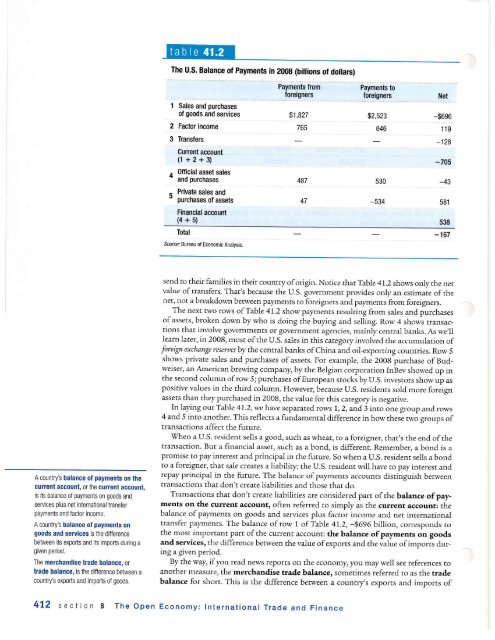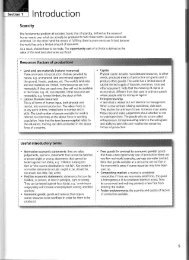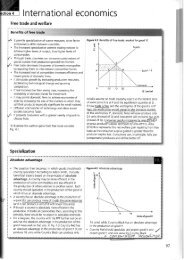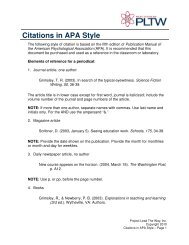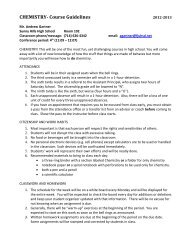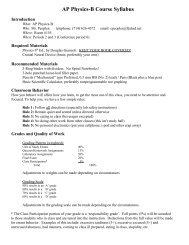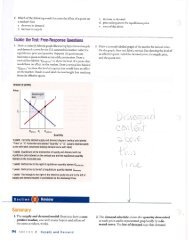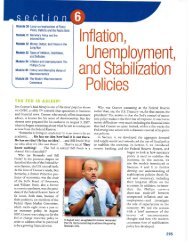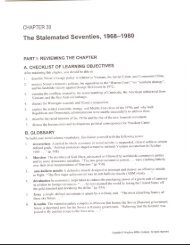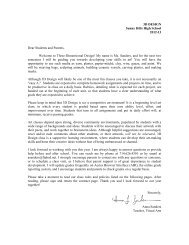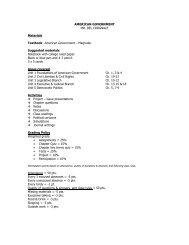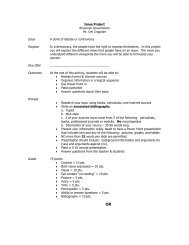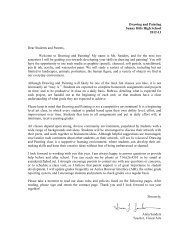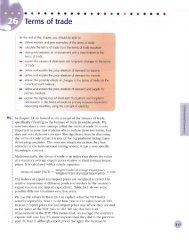AP Econ Module 41 Capital Flows Balance Payments - Sunny Hills ...
AP Econ Module 41 Capital Flows Balance Payments - Sunny Hills ...
AP Econ Module 41 Capital Flows Balance Payments - Sunny Hills ...
You also want an ePaper? Increase the reach of your titles
YUMPU automatically turns print PDFs into web optimized ePapers that Google loves.
A country's balance 0l paymenls on lhe<br />
currenl accounl,0r lhe curlent account,<br />
is its balance 0f payments 0n goods and<br />
services plus net intemational transfer<br />
payments and factor lncome.<br />
A counlry's balance ol payments on<br />
goods and seruices is the ditterence<br />
between its exports and its impons during a<br />
given period.<br />
The merchandise trade balance, or<br />
trade balance, is the difference between a<br />
country's exports and imp0rts 0f goods,<br />
The U.S. <strong>Balance</strong> of <strong>Payments</strong> in 2mB (billions of dollars)<br />
2<br />
3<br />
Sales and purchases<br />
ot goods and services<br />
Factor income<br />
Transf€rs<br />
Cunent account<br />
(1 +2+3)<br />
olficial asset sales<br />
and purchases<br />
Private sales and<br />
purchasss of assets<br />
Financial account<br />
(4+5)<br />
Total<br />
Source, Bureau of Eoonomic Analysis.<br />
<strong>Payments</strong> from<br />
loreigners<br />
$1,827<br />
765<br />
487<br />
47<br />
<strong>Payments</strong> to<br />
loreigners Net<br />
$2,523<br />
b4b<br />
-534<br />
-$696<br />
119<br />
-128<br />
-705<br />
_43<br />
581<br />
538<br />
-167<br />
send to their families in their country oforigin. Notice that Table <strong>41</strong>.2 shows only the net<br />
value of ffansfers. ThaCs because the U.S. government provides only an estimate ofthe<br />
neg not a breakdown between payments to foreigners and pal,rnents from foreigners.<br />
The next two rows ofTable <strong>41</strong>.2 show payments resulting fiom sales and purchases<br />
ofassets, broken down by who is doing the buying and selling. Row 4 shows rransactions<br />
that involve governments or government agencies, mainly central banks. As we,ll<br />
leam later, in 2008, most ofthe U.S. sales in this caregory involved the accumulation of<br />
foreign exchange ruenu by the central banks ofChina and oil-expocing counries. Row 5<br />
shows private sales and purchases of assets. For example, the 2008 purchase of Budweiser,<br />
an American brewing company, by rhe Belgian corporation InBev showed up in<br />
the second column ofrow 5; purchases ofEuropean stocks by U.S. invesrors show up as<br />
positive values in the third column. However, because U.S. residents sold more foreign<br />
assets than they purchased in 2008, rhe value for this category is negarive.<br />
In laying out Table <strong>41</strong>,2, wehave separared rows 1, 2, and 3 into one group and rows<br />
4 and 5 into another. This reflects a fundamenral difference in how these two groups of<br />
transactions affect the future.<br />
Vtren a U.S. residenr sells a good, such as wheat, to a foreigner, thaCs the end ofthe<br />
transaction. But a financial assetr such as a bon4 is different. Remember, a bond is a<br />
promise to pay interesr and principal in the future. So when a U.S. resident sells a bond<br />
to a foreigner, that sale creates a liability: the U.S. resident will have to pay interest and<br />
repay principal in the future. The balance of payments accounts distinguish berween<br />
transactions that don't create liabilities and those that do.<br />
Transactions that don't create liabilities are considered part ofthe balance ofpayments<br />
on the cutrerlt account, often referred to simply as the cufrerlt accoune the<br />
balance of payments on goods and services plus factor income and net international<br />
transfer payments. The balance of row 1 ofTable <strong>41</strong>.2, -9696 billion, coresponds to<br />
the most important part ofthe currenr account: the balance ofpapnents on goods<br />
and services, the difference between the value ofexports and che value ofimporrs during<br />
a given period.<br />
By the way, ifyou read news reports on rhe economy, you may well see references to<br />
another measureJ the merchandise tmde balance, sometimes referred to as the trade<br />
balance for short. This is rhe difference between a councy's exports and imports of<br />
<strong>41</strong>2 section 8 The Open <strong>Econ</strong>omy: lnternational Trade and Finance


